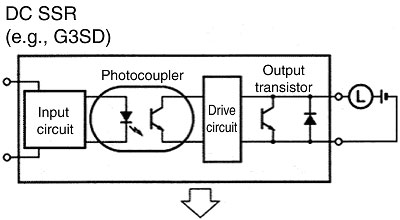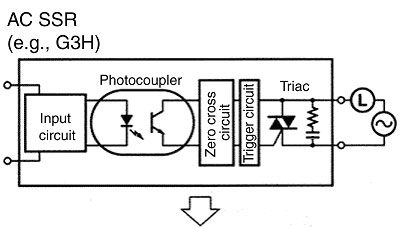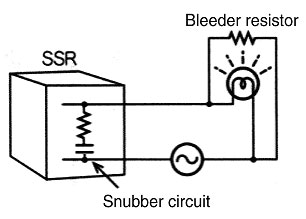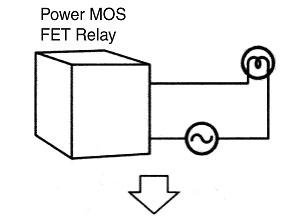Question
What is the difference between an Solid-state Relay and a power MOS FET?
Answer
There are two main differences between Solid-state Relays and power MOS FETs.
Difference 1:
There are DC Solid-state Relays and AC Solid-state Relays.


A Power MOS FET Relay can be used with either a DC load or AC load.
Difference 2:
The leakage current is smaller compared with an Solid-state Relay.
Solid-state Relay:
Leakage current causes the lamp to light dimly. A bleeder resistor is added to prevent this. The Solid-state Relay requires a snubber circuit to protect the output elements. This is the cause of Leakage current.

Power MOS FET Relays:
Because the leakage current is very small (e.g., 10 mA max.) the lamp does not light dimly. This is because a snubber circuit is not required to protect the output element MOS FET. A varistor is used to protect the MOS FET.

The circuit can be simplified and work reduced because a bleeder resistor is not required.
Recommended Products
 MY
MY
Best-selling, general-purpose relays that can be selected based on operating environment and application
 LY
LY
Power-switching Compact General-purpose Relays
 G3PE (Three-phase)
G3PE (Three-phase)
Compact, Slim-profile SSRs with Heat Sinks. Solid State Contactors for Three-phase Heaters Reduced Installation Work with DIN Track Mounting.